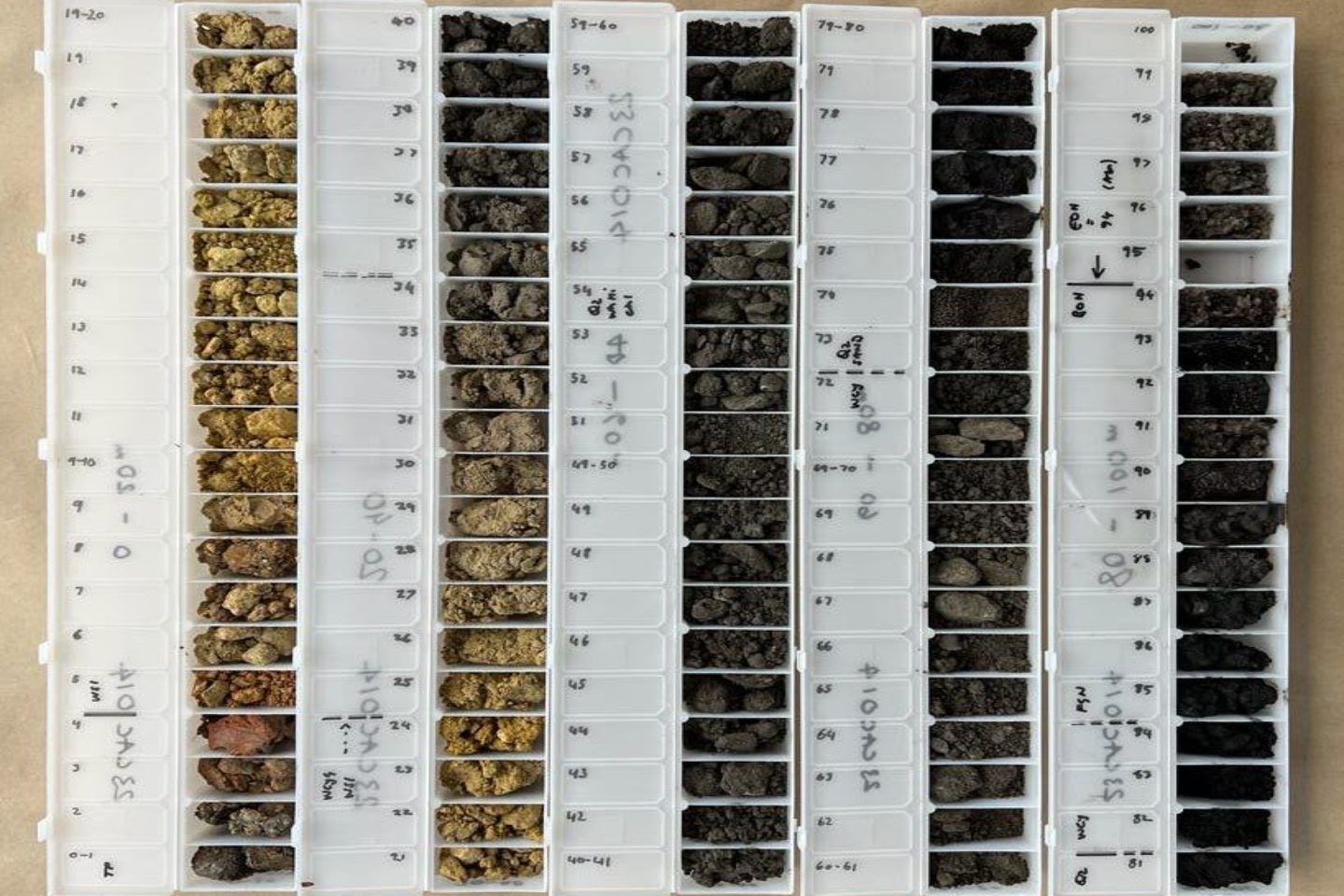Emu NL expects an October assay return after completing a maiden drilling program on time and on budget at its Condingup clay-hosted rare earths project near Esperance on Western Australia’s south coast. The company says 34 holes for 2762m targeted clay traps adjacent to and overlying the Booanya granite outcrops that produced rock chips testing as high as 2124ppm TREO.

Emu NL expects an October assay return after completing a maiden drilling program on time and on budget at its Condingup clay-hosted rare earths project near Esperance on Western Australia’s south coast.
The company says the 34 holes, totalling 2762m, targeted clay traps adjacent to and overlying the Booanya granite outcrops which produced rock chips testing as high as 2124 parts per million total rare earth oxides (TREO).
It says the holes were drilled to basement rock and the average depth was 81.2m, which is coincident with the interpreted depth of basement from passive seismic survey data. That has bolstered management’s confidence in the accuracy of its seismic datasets in estimating depth and in turn, clay trap thickness.
Emu says the program is a first-pass test of the acreage and only covered a small proportion of its vast portfolio of targets within the 1560-square-kilometre project. The holes were designed to test the project’s eastern and western margins, with the majority of holes drilled in two targets near the western edge, bordering its namesake WA town of Condingup.
The targets represent what the company says are areas of rare earths-enriched clay channels, which are deeply weathered and are overlying or adjacent to the Booanya granites. The granites initially sparked Emu’s interest, with rock-chip TREO grades turning some heads after sampling efforts last December.
Rock-chip grades included 1242ppm, 1090ppm and 1206ppm TREO, in addition to the previously-mentioned 2124ppm. Historical rock chips have gone 1142ppm and 1263ppm TREO and there have been a further 17 results between 450ppm and 1000ppm.
Notably, magnetic rare earth oxides (MREO) made up about a quarter of the TREO grade from Emu’s outcrop sampling and heavy rare earth oxides (HREO) made up 12.7 per cent.
MREO are the sum of the oxides of neodymium, praseodymium, dysprosium and terbium and are commonly used in the manufacture of high operating temperature permanent magnets that are notable for their durability and strength.
Neodymium-praseodymium oxide is an input for magnets that have 10 times the strength of conventional magnets and there is currently no known substitute. The oxide represents about 90 per cent of the value in rare earths markets and is currently trading at a spot price of about $60 per kilogram.
HREO are made up from the oxides of about 10 elements and also form critical inputs in the manufacture of hybrid cars, fiber optics and medical devices.
EMU has some Esperance neighbours also hunting rare earths paydirt, notably OD6 Metals and Mount Ridley Mines.
OD6 has hit some bumper rare earths hits about 35km to the north-east of Emu’s land at its Splinter Rock project, where it has announced a mineral resource of 344 million tonnes at 1308ppm TREO at a 1000ppm cut-off grade, with high-value MREO making up about 23 per cent of the TREO grade.
The company completed its phase-three drilling at Splinter Rock last month and is awaiting assays. Phase-two results came back with impressive TREO concentrations of up to a whopping 6605ppm. Some of the best results include 69m at 1483ppm TREO with 21.1 per cent MREO from 24m and 66m at 1516ppm TREO with 20.2 per cent MREO from 15m.
Emu says its geologic model at Condingup is similar to that at Splinter Rock, with both targeting the rare earths-enriched weathered profile adjacent to the fertile Booanya granite intrusions. Management says it has pegged all of the ground where the granite bedrock contacts the clays and believes it has a strong chance of making a similar-sized rare earths discovery to OD6.
Mount Ridley Mines it also on the hunt for clay-hosted rare earths about 40km north-east of Emu’s ground, it has received assays from its Mia prospect including 9m at 3690ppm TREO, including 3m at a 7410ppm, 9m at 1476ppm, 8m at 3272ppm, including 3m at 9329ppm, 24m at 1965ppm and 6m at 6648ppm, including 1m at a massive 28831ppm.
Mount Ridley revealed last month that it had achieved high extraction rates of rare earths in testing through a simple hydrochloric acid leach at an acid concentration of 25 grams per litre hydrochloric acid, within a leaching period of 24 hours. The testing produced extraction rates of up to 72 per cent of TREO, including up to 85 per cent of MREO.
Clay-hosted rare earths deposits provide several distinguishing features when compared to their hard-rock spodumene counterparts. The clays are soft, meaning cheap air-core (AC) drilling is possible and only negligible blasting is required. They also sit shallow, making them suitable for open-pit mining, have a low strip ratio and do not require crushing or milling.
Clay-hosted deposits often contain a higher proportion of MREO and HREO, which were both elevated in Booanya granite outcrops within the Condingup project area.
It will be all eyes on the Emu news flow next month as the assays flood back in, potentially boosting Condingup to Splinter Rock’s status.
Is your ASX-listed company doing something interesting? Contact: matt.birney@businessnews.com.au















